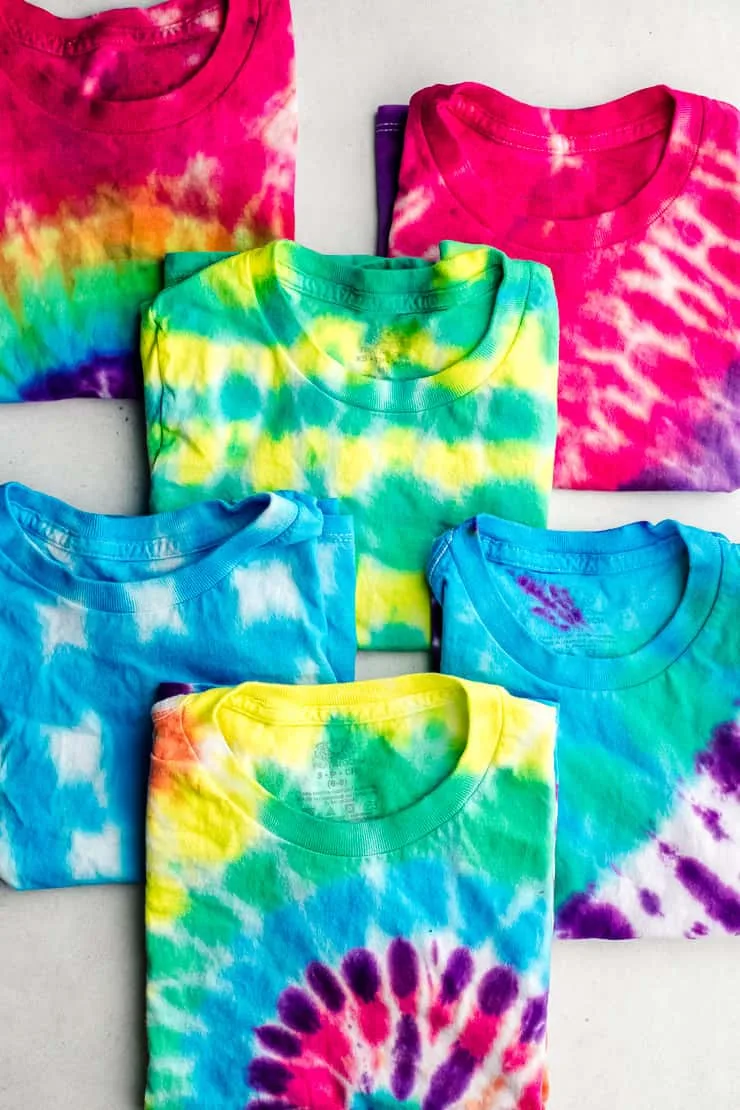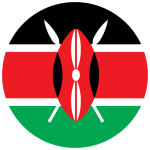Tie-Dying Printing Method for Fabric
Tie-dye is a simple method to add a range of brilliant colors and designs to your clothing.
Tie and dye is one of the most extensively used and traditional ways of fabric printing. This dyeing process has been used to convey uniqueness and creativity throughout history.
However, modern tie-dye printing has become the best solution for many people wanting efficiency and precision when designing fabric patterns.
What is Fabric Printing?
Fabrics may be printed in three distinct ways: direct printing, discharge printing and resist printing.
- Direct Printing. This form of printing directly applies dyes onto the fabric’s surface.
- Discharge Printing. This printing involves removing colors from specific areas on already dyed fabric. The process mostly involves the use of bleach or other fitting chemicals.
- Resist printing. The printing process involves using resist binds or paste on fabric. Afterward, a dye is applied to the fabric so that the resist binds or dyes prevent dyes from getting onto the fabric.
What is Tie-Dye Printing?
Unlike traditional tie-dye techniques, dye printing involves printing machines to create tie-dye designs on fabric. Printing machines have become a popular option when it comes to tie-dyeing. The machine can recreate similar designs from hand-dye patterns.
There are a variety of printing machines. They include rotary screens, digital printing, or flatbeds for tie-dye pattern reproduction.
Why Should You Try Tie-Dye Printing Over Traditional Tie-Dyeing?
Why not do it yourself?
Well, hand tie-dyeing can be a complicated adventure if you do not have a clear handle on what you are doing. Preparing the fabric and trying to create different patterns can be a lot messier than you think.
In addition, hand-dyed fabric colors tend to fade quicker than printed tie dyes.
Another disadvantage to hand-dyed fabric is the unpredictability of the pattern design you are trying to create. In most cases, it takes hours for experts to create complicated designs on textiles.
However, you can prevent any unsuccessful dyeing attempts using a good printing solution.
What Are the Advantages Of Using Tie-Dye Printing?
Printing tie-dyes on your fabric is much faster and easier than hand-dyeing. All you need to do is choose the dye pattern you would like and pick the pattern size and fabric you find comfortable.
The process takes a few minutes, and you do not have to worry about getting any unexpected patterns or making an irreversible mess to your fabric.
In addition, you do not have to worry about colors on your fabric fading over time.
How Are Tie-Dye Patterns Created?
In both hand-dyed and print tie-dye, the process involves folding, twisting, pleating, or crumpling cloth or a garment, then tying it with string or rubber bands, then dying it.
These methods prevent the dye from staining the fabric partially or entirely. Repeated tying and dipping in multiple colors can result in multicolored patterns. A few of the stunning and dramatic designs created include circles, spirals, stripes, and mandalas.
What are the Tie-Dying Printing Techniques?
The dyeing effects are affected by the strain used when winding the fabric. Likewise, it is also affected by the number of yarns used when binding the fabric and the distance between the windings in the binding.
The common techniques used during tie-dye printing include:
- Knotting. In this method, a knot is tied to the fabric. Depending on the design you have in mind, the knots are tied at regular or irregular intervals. By using the knotting technique, dye printing can create distinctive and creative patterns that fit the design that you want.
- Twisting and coiling. This technique involves twisting the fabric and tying it before applying the dye. In most cases, the winding machine can twist the fabric into a coil of rope and then tie the fabric.
- Folding. The folding technique involves folding the fabric to make defined patterns, tying it, then dyeing. In most cases, the triangular folds create exciting shape patterns.
- Fabric over tube. The fabric is wrapped around a tube using a rope in this method. Dye is then applied around the fabric.
- Scrunching. The scrunching technique is used when creating uneven tie-dye patterns on the fabric. In this method, the fabric is gathered up and scrunched up before tying the fabric with a binding. Dye is later applied to the fabric.
- Tacking or running stitches. Threads are stitched into the fabric when making running or tacking stitches, creating the desired pattern. However, we ensure that the stitching needle is not too thick, which would leave noticeable holes in the fabric.
What Is the Tie-Dye Printing Process?
- Preparation: A tie-dye preparation machine is used to get the fabric ready for the dyeing process.
- Winding: After the fabric pattern and size have been determined, the fabric is put in a winding machine that determines the tension, number, size, and distance of the windings.
- Dyeing: The fabric is then put into the dryer, where the dyeing process begins. During this stage, dyes and auxiliaries are selected.
- Unwinding: Once the fabric has been dyed, it is put in an unwinding machine, unwinding the ropes or binding.
- Washing: The excess dye is then washed off the fabric revealing the tie-dye pattern.
Whether you want to get a tie-dye fabric for your clothes design or want fabric for your house accessories, tie-dye printing should be your perfect solution. Get the right design and accent for your new tie-dye patterns today.
Do not hesitate to get in touch with any questions on tie-dye printing or any other form of fabric printing.
Also see: Sublimation Printing, Dot Matrix printers


